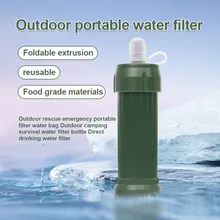Introduction
Nature is a stunning and powerful force, but it can also be uncompromisingly harsh. Whether you’re an outdoor enthusiast or simply find yourself in a survival situation, having the knowledge and skills to endure in the wild is invaluable. In this extensive guide, we’ll provide you with a wealth of essential survival tips, broken down into three key sections:
I. Preparation: The foundation of survival begins before you even set foot in the wilderness. We’ll explore what you need to do before heading into the wild.
II. Survival Techniques: When you’re out in the wild, it’s essential to know how to navigate, find food and water, build shelter, and stay safe. We’ll delve into these survival techniques in great detail.
III. Common Wild Scenarios: Every environment presents its unique challenges. We’ll explore specific scenarios, such as surviving in the desert, forest, mountains, and more.
By the time you finish reading this guide, you’ll possess a deep understanding of wilderness survival, armed with practical skills and knowledge to tackle unforeseen situations in the great outdoors.
I. Preparation: The Key to Survival
1. Share Your Plans
Before embarking on any outdoor adventure, it’s vital to inform someone of your plans. Share details about your destination, expected return time, and any emergency contacts. This simple step can be a lifesaver if something goes awry.
2. Research Your Destination
Knowledge is your greatest asset. Prior to your adventure, meticulously research the area you’ll be exploring. Understanding the terrain, climate, wildlife, and potential hazards specific to that location can significantly enhance your chances of survival.
3. Packing Essential Gear
A well-thought-out survival kit should include:
- Firestarter: A reliable method to ignite fires is critical for warmth, cooking, and signaling.
- Water Purification: Carry water purification tablets or a portable filter to ensure a clean water source.
- Navigation Tools: Maps, a compass, and a GPS device can help you find your way and avoid getting lost.
- Shelter: A compact, lightweight tent or tarp can protect you from the elements.
- First Aid Kit: Be prepared to treat injuries and medical emergencies.
4. Basic First Aid Skills
Understanding how to administer basic first aid can make a significant difference in your survival. Learn how to clean and dress wounds, perform CPR, and address common outdoor injuries like cuts, burns, and sprains.
5. Master Navigation
While modern technology has made navigation easier, it’s essential to know how to navigate without relying solely on electronic devices. Learn how to use a map and compass effectively. GPS devices are handy but remember that batteries can fail, making traditional navigation skills invaluable.
II. Survival Techniques
6. Finding Water

Survival-Water-Purifier-Survival-Water-Filter-0-01-Micron-Survival-Water-Purifier-Emergency-Outdoor-Water-Filter
Water is your top priority in a survival situation. Here’s how to find and procure it:
- Natural Sources: Look for water sources like streams, rivers, or lakes. These are usually your best bet.
- Rainwater: Collect rainwater using any available containers or by fashioning a makeshift rain catchment system.
- Moisture Extraction: In some environments, you can extract moisture from plants by using a technique called transpiration bags.
7. Building a Shelter
A proper shelter is essential for maintaining body temperature and protecting yourself from the elements. Here are some shelter-building tips:
- Natural Shelters: Learn to identify natural shelters, such as caves or overhanging rocks.
- Tarp Shelters: If you have a tarp or plastic sheet, you can create a simple A-frame or lean-to shelter.
- Debris Hut: In a forested area, construct a debris hut using fallen branches and leaves.
8. Starting a Fire
Fire serves multiple crucial purposes in the wild, including warmth, purifying water, and signaling for help. Master these fire-starting techniques:
- Firestarter: Carry a reliable firestarter, such as waterproof matches, a magnesium fire starter, or a ferrocerium rod.
- Flint and Steel: Learn to create sparks by striking steel against flint.
- Friction Methods: While challenging, methods like the bow drill or hand drill can be employed to generate fire through friction.
9. Finding Food
Sustenance is vital for your survival. Here’s how to find and identify edible food sources in the wild:
- Edible Plants: Familiarize yourself with local edible plants, ensuring you can differentiate them from poisonous varieties.
- Insects: Insects are an excellent source of protein. Learn which ones are safe to consume.
- Small Game: If you have the means (and skills), trapping or hunting small game can provide a more substantial food source.
10. Signal for Help
In a dire situation, it’s crucial to attract attention for rescue. Use these signaling methods:
- Whistle: Carry a whistle and use it to make loud, piercing noises that can travel far in the wilderness.
- Mirror: A signaling mirror can reflect sunlight to create visible flashes.
- SOS Signals: Create large SOS signals on the ground using rocks, logs, or any available materials.
III. Common Wild Scenarios
A. Surviving in the Desert
11. Stay Hydrated
Desert environments are characterized by scorching temperatures and limited water sources. To stay hydrated:
- Conserve moisture by staying in the shade during the hottest parts of the day.
- Cover your head and body to reduce sweat evaporation.
- Keep your mouth closed to minimize water loss through respiration.
12. Find Water
Finding water in the desert can be challenging, but it’s essential for survival:
- Look for signs of moisture, such as vegetation or animal tracks, as these may lead you to water sources.
- In some cases, you can dig for water in dry riverbeds or near the base of large plants.
- Consider using a solar still to extract water from the ground.
B. Surviving in the Forest
13. Prevent Hypothermia
Forests can be damp and chilly, especially at night. To prevent hypothermia:
- Dress in layers to trap body heat.
- Stay dry by using waterproof clothing and shelters.
- Build a fire to maintain warmth.
14. Forage for Food
Forests offer a variety of edible plants, mushrooms, and opportunities for small game hunting. Here’s what you need to know:
- Familiarize yourself with edible plants in your area, but always exercise caution as some plants can be toxic.
- Learn to identify edible mushrooms, and be certain of their safety before consuming.
- Use snares or traps to catch small game like rabbits or squirrels, if possible.
C. Surviving in the Mountains-Survival Tips
15. Altitude Sickness Awareness
Mountainous terrain presents unique challenges due to the increase in altitude. To avoid altitude sickness:
- Ascend gradually to allow your body to acclimatize to the reduced oxygen levels.
- Stay well-hydrated, as dehydration can worsen the effects of altitude sickness.
16. Avalanche Safety
In snowy mountain regions, avalanches are a real threat. Be cautious and informed about avalanche safety:
- Learn to recognize signs of avalanche danger, such as recent snowfall, steep slopes, and unstable snowpack.
- Carry avalanche safety gear, including a beacon, probe, and shovel, and know how to use them.
Frequently Asked Questions (FAQs)
Q1. How long can a person survive without water in the wild?
A1. The duration of survival without water varies based on several factors, including temperature, activity level, and individual health. In extreme conditions, it’s typically only a matter of days (3-5) without water.
Q2. What’s the best way to purify water in the wild?
A2. The most effective method for purifying water in the wild is boiling it. Boiling kills harmful bacteria and parasites. If you cannot boil water, consider using water purification tablets or a portable filter.
Q3. How can I protect myself from wildlife in the wild?
A3. To minimize encounters with dangerous wildlife:
- Make noise while hiking to alert animals to your presence.
- Store food securely to avoid attracting wildlife.
- Keep a safe distance from wild animals and never approach them.
- Carry bear spray or repellent if you are in bear country.
Q4. What should I do if I get lost in the wilderness?
A4. If you find yourself lost in the wilderness:
- Stay calm and take deep breaths to manage anxiety.
- Assess your surroundings and try to retrace your steps if possible.
- If you can’t find your way, stay put, build a shelter, and signal for help using whistle blasts, mirror flashes, or SOS signals made from rocks or sticks.
Conclusion
Surviving in the wild demands preparation, knowledge, and adaptability. By following the comprehensive tips and techniques outlined in this extensive guide, you will not only increase your chances of thriving in the great outdoors but also gain a deep sense of confidence in your abilities. Remember, survival isn’t solely about physical skills; it’s also about mental resilience. Stay calm, stay focused, and stay alive. Nature can be challenging, but with the right skills and mindset, you can conquer the wild and emerge stronger than ever before. In the face of adversity, you have the potential to become a true wilderness survivor.



